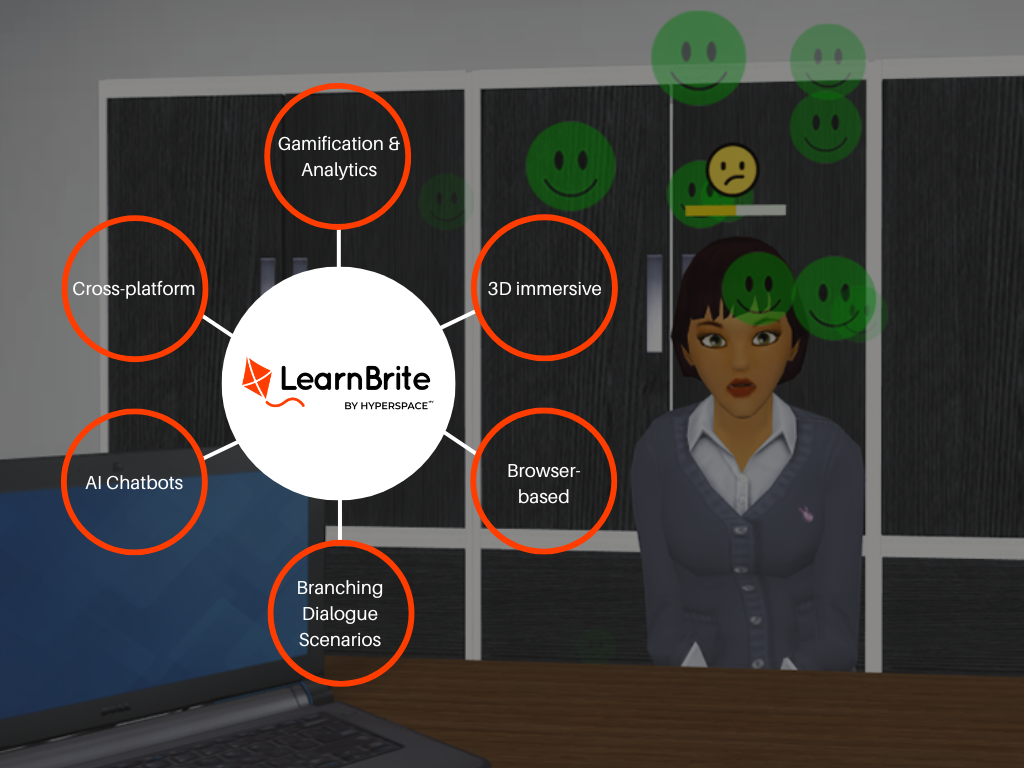The new employee onboarding experience plays a crucial role in shaping an individual’s perception of their workplace and contributes significantly to overall job satisfaction. A well-designed onboarding process can bring numerous benefits to employees and the organization. To provide a comprehensive overview of the benefits of an effective new employee onboarding experience, this blog post will discuss strategies to create a smooth transition for new hires and offer practical tips to enhance their experience while addressing common challenges.
Furthermore, we will provide practical tips for enhancing the onboarding experience, ensuring your new team members feel supported as they navigate their initial work days. Additionally, we will address common challenges faced during onboarding and offer best practices to overcome these obstacles.
Realizing the value of a beneficial onboarding process and applying these tactics can set your staff up for success from their first day and cultivate an atmosphere encouraging progress and growth.
Table of Contents:
- Benefits of Onboarding New Employees
- a. Improved Retention Rates
- b. Increased Productivity
- c. Improved Employee Engagement
- d. Reduced Training Costs
- Strategies for Effective Onboarding Experiences
- Tips for Enhancing the Onboarding Experience
- Challenges of Onboarding New Employees
- Frequently Asked Questions New Employee Onboarding Experience
- Conclusion
1. Benefits of Onboarding New Employees
Onboarding fresh hires can bring many advantages to the business, from increased employee loyalty and greater efficiency to increased worker satisfaction and reduced instruction costs. This section will discuss the benefits of onboarding new employees and provide strategies for creating effective onboarding experiences.
a. Improved Retention Rates
A well-structured onboarding experience helps increase employee retention by making them feel valued and supported from day one. Providing the essential elements for success and clarifying how an individual’s role contributes to the organization’s objectives can help foster greater commitment and increase productivity.
b. Increased Productivity
An effective employee onboarding process enables new hires to quickly become productive members of their teams by providing them with clear expectations and comprehensive training materials right from the start. By investing time in proper orientation programs that cover job-specific tasks and general company policies, organizations can significantly reduce ramp-up time for newly onboarded employees.
c. Improved Employee Engagement
- Fostering connections: A good onboarding experience encourages team-building activities that help establish relationships between coworkers early on, ultimately leading to better team collaboration.
- Culture immersion: When new hires are introduced to the company culture and values during onboarding, they are more likely to feel connected and engaged with the organization.
- Feedback opportunities: Providing regular feedback channels for new employees allows them to voice concerns or ask questions as they adjust to their roles, fostering a sense of involvement in the company’s success.
d. Reduced Training Costs
A well-designed onboarding program can help organizations save time and resources by reducing training costs. Using technology like LearnBrite’s no-code platform, companies can create immersive 3D experiential learning scenarios that enable self-paced or instructor-led courses, micro-learning modules, employee onboarding sessions, soft skills training, gamified learning experiences and role-play simulations without extensive development efforts. This reduces costs and ensures consistent quality across all training materials.
Onboarding new personnel may result in higher retention, greater efficiency, enhanced worker participation and decreased training outlays for a company. By utilizing effective onboarding strategies like establishing clear expectations and goals, providing comprehensive training materials, leveraging technology to streamline processes and fostering a welcoming environment for new hires, organizations can ensure that their onboarding experiences are successful.
Key Takeaway:
A no-code platform is being developed to create immersive 3D learning scenarios for various types of training, such as employee onboarding, soft skills development and gamified learning. The focus is on providing an engaging, self-paced or instructor-led experience.
2. Strategies for Effective Onboarding Experiences
Constructing an onboarding process that produces a positive experience for new staff members is essential in order to guarantee they feel accepted, stimulated, and ready for their part within the company. The following strategies can help organizations develop a successful onboarding process that fosters employee satisfaction and productivity.
a. Establish Clear Expectations and Goals
From the moment a candidate accepts a job offer, it’s essential to communicate clear expectations about their role, responsibilities, and performance goals. This helps set the foundation for success by ensuring new hires understand what is expected of them from day one. Providing detailed job descriptions, discussing short-term objectives during orientation sessions, and sharing long-term career development plans are all ways to establish clear expectations.
b. Provide Comprehensive Training Materials
An effective onboarding process should include comprehensive training materials tailored to each employee’s needs. These resources may consist of instructional videos, interactive e-learning modules like LearnBrite, or hands-on workshops designed to familiarize new hires with company processes and software tools they’ll use in their daily work activities.
- Instructor-led courses: Facilitate live training sessions led by experienced trainers or subject matter experts who can provide personalized guidance based on individual learning styles.
- Mentorship programs: Pairing new employees with seasoned colleagues who can share insights into company culture while offering support throughout the initial adjustment period.
- Gamified learning experiences: Incorporating game elements into training materials to make learning more engaging and enjoyable for new hires.
c. Utilize Technology to Streamline Processes
Technology can be a powerful tool for optimizing the onboarding process, from keeping track of progress to providing access to essential resources and handling paperwork. Implementing HR software solutions designed specifically for onboarding can help automate administrative tasks while ensuring all required documentation is completed accurately and efficiently. Additionally, collaboration tools like Slack or Microsoft Teams can facilitate communication between remote employees and their teams during onboarding.
d. Foster a Welcoming Environment for New Hires
A positive work environment is crucial in helping new employees feel comfortable and engaged from day one. Encouraging team-building activities such as group lunches or icebreaker games during orientation sessions helps create connections among colleagues while promoting company culture values. Providing opportunities for socialization outside of work hours through events like happy hours or volunteer initiatives also contributes to building strong relationships within the organization.
By introducing these practices into the induction program, morale will be improved, and employee loyalty can be raised by giving recruits a strong platform for enduring success in your business.

When onboarding new employees, establishing clear expectations and goals, providing comprehensive training materials, utilizing technology to streamline processes and fostering a welcoming environment are all important strategies for successful onboarding experiences. Following the tips outlined in the next section of this article, such as creating an engaging orientation program, developing a mentorship program for new hires and encouraging socialization among colleagues, can further enhance your organization’s employee onboarding experience.
Unleash the full potential of your Metaverse with LearnBrite 100+ integrations, seamlessly connecting with popular tools such as Zoom, Hopin, Cornerstone OnDemand, Articulate, Slack, and more, amplifying your virtual experiences with the tools you already know and love.
Key Takeaway:
A no-code platform is being developed to create 3D immersive learning scenarios for various types of training, such as employee onboarding and soft skills development. This will provide an engaging and interactive experience for learners that can be self-paced or led by instructors.
3. Tips for Enhancing the Onboarding Experience
By providing new hires with a welcoming, supportive environment and the right tools to succeed in their roles, organizations can create an exceptional onboarding experience. Implementing these tips into your organization’s onboarding process can create a more engaging and effective employee journey.
a. Create an Engaging Orientation Program
An orientation program that captures employees’ attention from day one sets the stage for a successful onboarding experience. Incorporate interactive elements such as immersive 3D experiential learning scenarios, gamified activities, or group discussions to encourage active participation and facilitate a better understanding of company values, policies, and expectations.
b. Develop a Mentorship Program for New Hires
Mentorship programs provide new employees with guidance from experienced colleagues who can help them navigate challenges they may face during their initial months at work. This accelerates learning and fosters stronger relationships within teams while promoting collaboration across departments.
- Pair new hires with mentors based on shared interests or skill sets.
- Establish clear goals and objectives for both mentor-mentee pairs.
- Schedule regular check-ins between mentors and mentees to discuss progress toward goals.
c. Encourage Socialization Among Colleagues
Fostering connections among team members is essential in creating a supportive work environment where everyone feels included. Facilitate opportunities for social interaction by:
- Organizing team-building events or workshops focused on improving communication skills or problem-solving abilities within groups;
- Encouraging employees to participate in company-wide initiatives, such as volunteering or attending social events;
- Creating dedicated spaces for casual conversations and informal gatherings within the office.
d. Offer Flexible Scheduling Options
Offering flexible work arrangements to new hires can show your organization’s dedication to employee well-being and make the transition into their job smoother. Consider offering:
- Remote work arrangements or hybrid schedules that allow employees to balance personal and professional responsibilities more effectively;
- A gradual increase in workload during the first few weeks of employment, allowing time for adjustment and acclimation;
- The option to adjust working hours based on individual preferences, where feasible.
Incorporating these tips into your onboarding process will enhance the overall experience and contribute significantly towards creating an inclusive workplace culture that values employee growth and development.

By implementing the tips mentioned above, companies can create an effective onboarding experience that is both engaging and efficient. Being aware of new hires’ hurdles and instituting suitable protocols to facilitate a seamless transition is essential for an effective onboarding process.
Key Takeaway:
A no-code platform is being developed to create 3D immersive learning scenarios for various training needs such as employee onboarding, soft skills training and gamified learning. This project aims to design a new employee onboarding experience that can be self-paced or instructor-led with role-play simulations and micro-learning modules.
4. Challenges of Onboarding New Employees
Onboarding new employees can present several challenges, which, if not addressed effectively, may lead to an unsuccessful onboarding experience. In this section, we will delve into the difficulties associated with onboarding new employees and provide helpful strategies for addressing them.
a. Overwhelming Amount of Information to Process
New hires often face the challenge of quickly processing a large amount of information about their role, company policies, procedures, and Culture. To help alleviate this issue:
- Divide the data into smaller, more manageable pieces to facilitate absorption.
- Resources such as LearnBrite’s immersive 3D experiential learning scenarios offer engaging ways for new hires to learn at their own pace.
- Schedule regular check-ins with new employees during their first few weeks or months to ensure they understand key concepts and feel supported.
b. Difficulty Adjusting to Company Culture and Policies
New employees may struggle with adapting to the company’s Culture or understanding its unique policies and procedures. To overcome this challenge:
- Create clear documentation outlining your organization’s values, mission statement, goals, expectations from employees, and any specific rules or guidelines applicable within your workplace environment.
- Encourage open communication between team members so newcomers can ask questions without hesitation.
c. Limited Time to Train and Assimilate New Hires
In many organizations, there is limited time available for training sessions due to factors like tight deadlines & busy schedules, making it difficult to assimilate them quickly into their new roles. To address this issue:
- Consider implementing a modern onboarding process that utilizes e-learning platforms like LearnBrite, which allows for self-paced learning and can be accessed anytime.
- Develop microlearning modules to deliver bite-sized, focused content that is easier to consume and retain.
d. Lack of Support from Management and Supervisors
A lack of support from management or supervisors may leave new hires feeling lost & overwhelmed during their employee onboarding journey. To ensure the best onboarding experience possible:
- Assign a mentor or buddy who can provide guidance, answer questions, and help the new hire navigate through company culture & policies.
- Create opportunities for regular feedback sessions with managers or supervisors so that they are aware of any concerns or issues faced by newcomers on a real-time basis, allowing them to address these problems promptly before they escalate further down the line, causing dissatisfaction among employees and leading to higher attrition rates over the long run.
Key Takeaway:
A no-code platform is being developed to create immersive 3D learning scenarios for employee onboarding, soft skills training and gamified learning. The goal is to craft an enjoyable experience that can be taken at one’s speed or with a tutor.
Frequently Asked Questions New Employee Onboarding Experience
What is a good employee onboarding experience?
A good employee onboarding experience involves clear communication, comprehensive training materials, and support from management. It should help new hires understand their roles, company culture, and expectations while fostering a welcoming environment that encourages socialization and engagement.
How was your experience with onboarding?
As an instructional designer or learning professional, my onboarding experiences have varied. Successful ones included engaging orientation programs, mentorship opportunities for new hires, flexible scheduling options to accommodate individual needs and preferences, and regular progress monitoring.
What are the 4 Cs of employee onboarding?
The 4 C’s of employee onboarding are Compliance (understanding policies), Clarification (defining roles and responsibilities), Culture (learning about organizational values), and Connection (establishing relationships with colleagues). These elements contribute to effective integration into the workplace.
What are the 5 Cs of employee onboarding?
The 5 C’s expand upon the original concept by adding Confidence as a fifth element. This includes providing resources for skill development and ensuring employees feel supported in their roles. The complete list includes Compliance, Clarification, Culture, Connection, and Confidence.
Conclusion
Introducing new staff to an organization can be difficult, yet the process must be efficient and pleasant. By creating an engaging onboarding journey with personalized elements, providing access to relevant resources, encouraging collaboration between teams, offering feedback opportunities throughout the process and setting clear expectations from day one through the employee onboarding process – organizations will have the best chance of ensuring their new employee onboarding experiences are successful.
Empower your Metaverse with a good onboarding experience and unparalleled versatility using LearnBrite‘s browser-based platform, providing seamless access from smartphones, tablets, laptops, and VR/AR headsets without downloading or installing software, ensuring a “futureproof” virtual experience.
Discover how LearnBrite‘s no-code platform can help you create immersive 3D experiential learning scenarios for employee onboarding, soft skills training and more. Unlock your organization’s potential with interactive, gamified solutions tailored to meet your needs.


Recent Comments